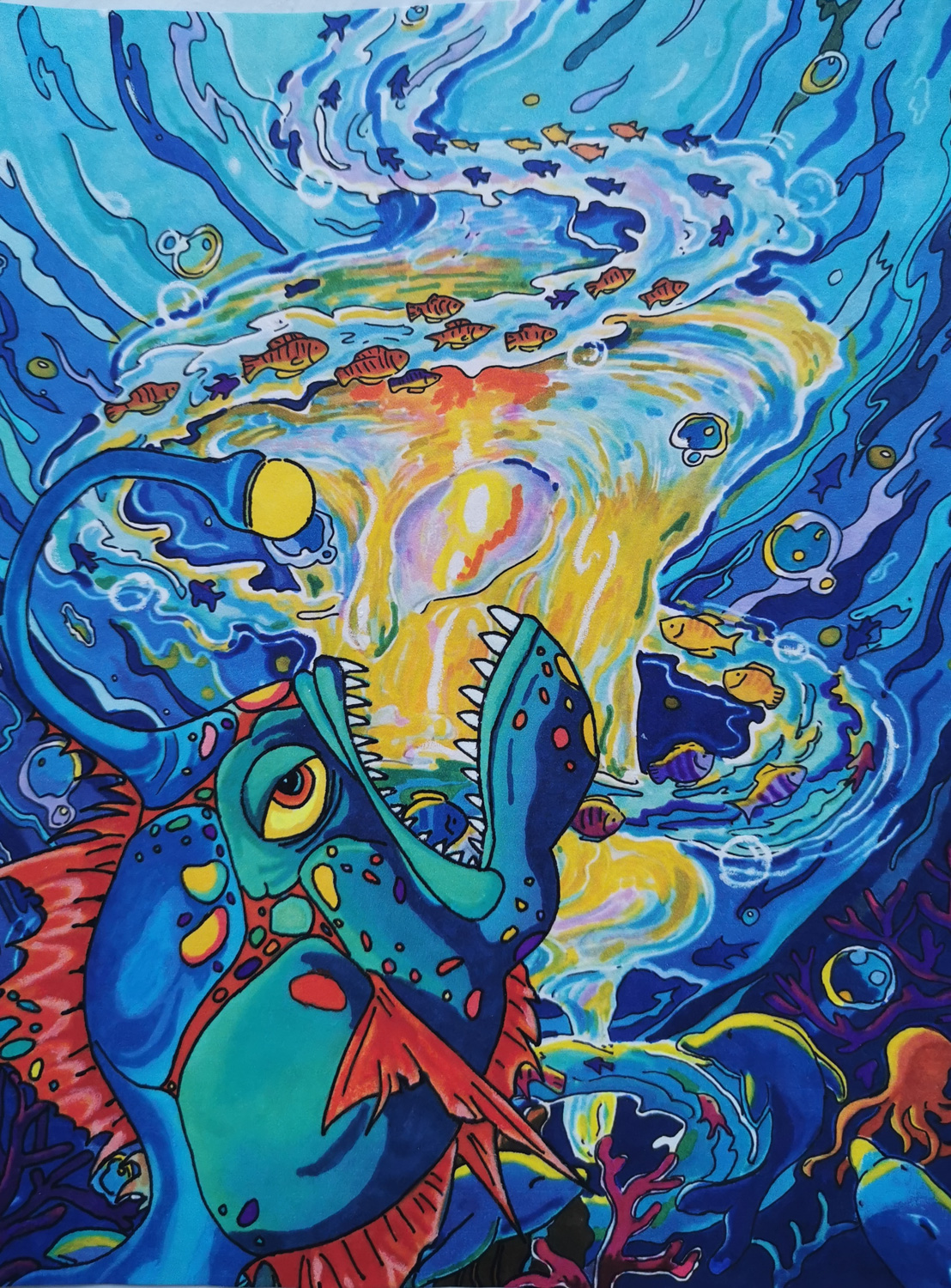2024 Science Without Borders® Challenge Finalists: 11-14 year old students
The Khaled bin Sultan Living Oceans Foundation is delighted to announce the finalists in our 2024 Science Without Borders® Challenge! This international contest engages students in important ocean issues through art. This year we asked students to create a piece of art that highlights the beauty and wonder of life in the deep sea.
We received a record number of submissions this year—over 1,700 entries from 82 different countries—making the selection process challenging yet rewarding. The submissions were breathtaking. Prepare to be amazed by their artwork, which showcases deep-sea creatures and ecosystems and emphasizes the urgent need to preserve the deep sea.
Entries to the Science Without Borders® Challenge are judged in two categories based on age. Here are the finalists selected from the younger group of applicants, students 11-14 years old:
"Deep Ocean Illuminator - Anglerfish" by Annie Douglas, Age 12, Bahamas
Artist's Statement: At 1,000 meters under the sea it is a deep-sea layer where no sunlight can be seen, but don't think that there's no light here. Organisms that live in this region have evolved lighting organs that can glow on their own, such as the anglerfish. The anglerfish can change color in time to adapt to its environment, and its key to survival is its spots, stripes and spikes, which give it the appearance of red seaweed. The anglerfish is particularly adept at lurking for food and evading predators. Biologically, this little lantern is called a lure. The lantern is formed by the first dorsal fin of the anglerfish, which gradually extends upwards. The front section acts like a fishing rod and the end expands to form a "lure". Many fish in the deep sea are phototropic, so the small lantern becomes a favorable weapon for the anglerfish to lure food.
